I’m back in Minnesota teaching for the spring semester, but I will continue to write posts from my fall semester in Italy. I haven’t forgotten my promise to take you on a field trip to Bologna, but sorting through and editing photos is taking longer than I wanted it to. In the meantime, here are two culinary discoveries from this week.
I suppose I should specify that my kitchen is in Saint Cloud, Minnesota – not the Saint-Cloud that is a suburb of Paris. Both are named after the same saint, the canonized son of Clovis the 1st, the first king of France.
Last weekend I visited the Holy Land grocery and deli in Minneapolis with my daughter. We took our time, wandering every aisle and paying special attention to our preferred categories: for me, foods I haven’t tried before; for her, familiar imports from the UK or other countries that remind her of her childhood. We both picked out olives and baklava. On top of that, she bought McVities Digestives and Rich Tea biscuits; I bought dates, labneh, and something green in the produce aisle that I had never seen before.
I asked the produce worker what they were and he said “green chickpeas,” explaining that the pods are green in the spring and will yellow and dry over the summer. I realized that it’s the same with edamame: edamame are the fresh green pods of soybeans, the same soybeans that are yellow and dry in the fields here in central Minnesota in September.
When I asked how to eat them, the helpful produce employee suggested roasting them in the oven and I found more concrete information when I got home here: https://palestineinadish.com/recipes/roasted-green-chickpeas-high-in-protein-healthy-and-tasty/
I followed the directions: rinsed them in a colander, spread them still wet on a baking sheet, sprinkled with salt, and put under the broiler. It didn’t take long – about ten minutes, shaking the pan halfway through.
I ate them still warm, pinching the pods open and squeezing out the surprisingly bright green chickpeas into my mouth. They tasted like springtime: somehow green and fresh and earthy. I wished that I had bought more.
My other experiment this week was buying organic dandelion greens (cultivated ones) and cooking them like Roman style cicoria ripassata, described in this post. I can’t find chicory in Minnesota, and dandelion greens are the closest substitute.
The good news is that it worked, meaning that I created a dish similar to the chicory that I had in Rome, both at home and in restaurants. I cooked the dandelion greens longer than I have before, waiting until the water was colored and tasting along the way for bitterness.
Then I drained them, squeezed the water out, cut the block, and reheated them in a saucepan where I had been gently cooking chopped garlic and chili flakes in olive oil.
The final result was pretty close to Roman chicory, just slightly more bitter. I realized while making it that there is a higher stem to leaf ratio with dandelion greens than with chicory, and the stems are much more bitter than the green part.
On the plus side, now that I have this way of preparing them, I’m going to be eating dandelion greens much more often, and I hope you will too. I typed up a recipe to make that easier. 😊
Dandelion Ripassata
One bunch of dandelion greens (white or red stems, it doesn’t matter)
1 Tbsp olive oil
1 large or two small cloves garlic
Sprinkle of chili flakes
Bring a large pot of water to boil. While you are waiting, fill the sink halfway with cold water, plunge dandelion greens into the water and move around to rinse well. Remove any discolored leaves. Scoop out the leaves into a colander, and put them into the water when it boils. Leave the burner on high, bring back to boil, and cook five to seven minutes longer, until the water changes color. Pour into the colander and use chopsticks or a fork to spread the greens out a bit so they will cool more quickly.
Meanwhile, finely chop the garlic. Put the olive oil in a saucepan on low heat and add the chopped garlic. You want the garlic to cook slowly but not brown. Add the chili flakes. When the garlic has cooked, remove from the burner if your greens are not yet ready to be added.
When the greens have cooled and you can touch them, squeeze out the water. I make a little rectangular packet in one part of the colander and squeeze it until no more water comes out. Set the packet on a cutting board and cut it into one inch slices – this is to avoid having 10 long stringy individual greens in your final dish.
Reheat the oil if necessary, add the greens, and heat on medium until they are hot. That’s all there is to it!
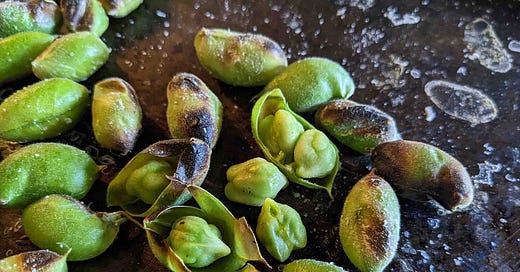



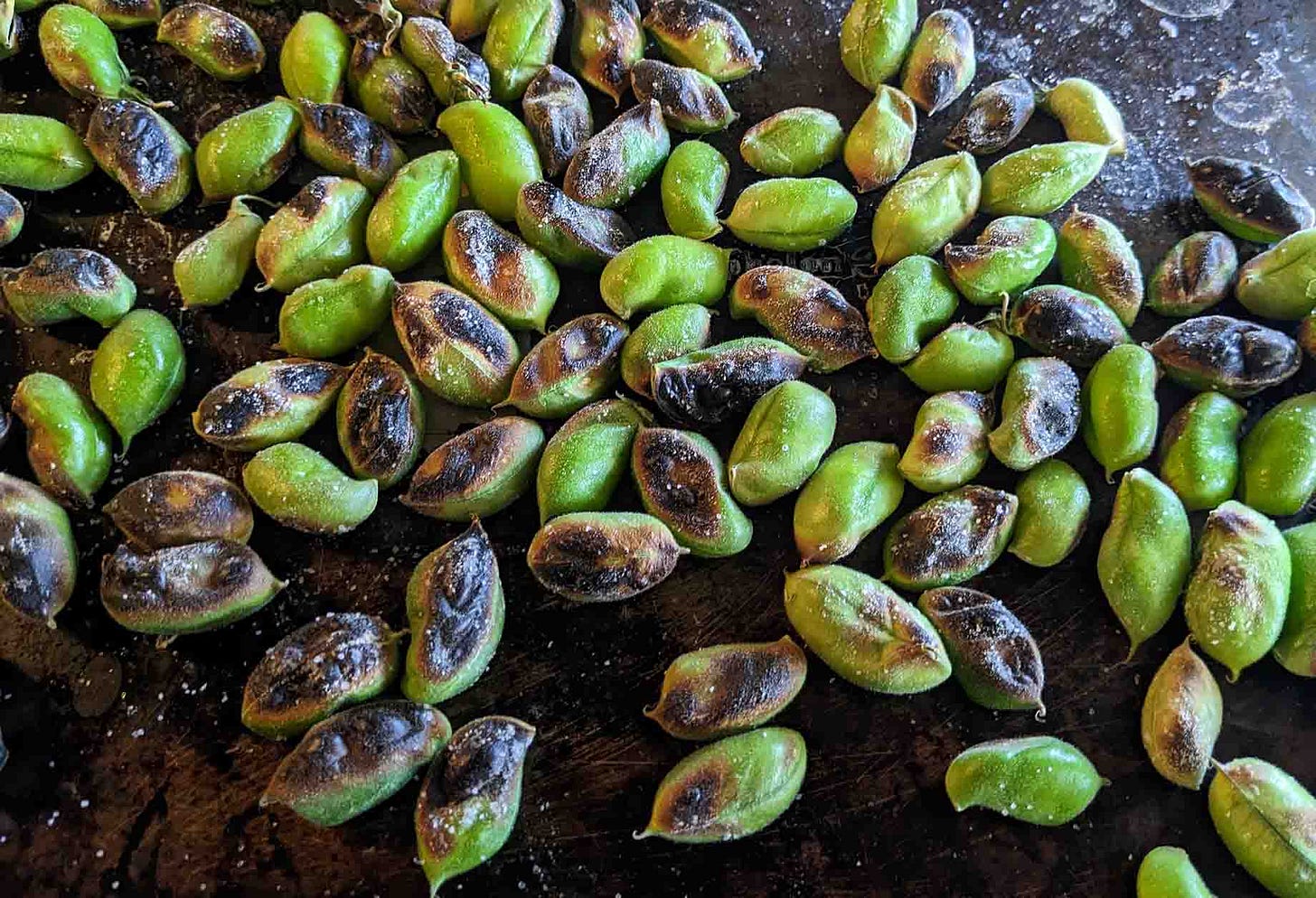
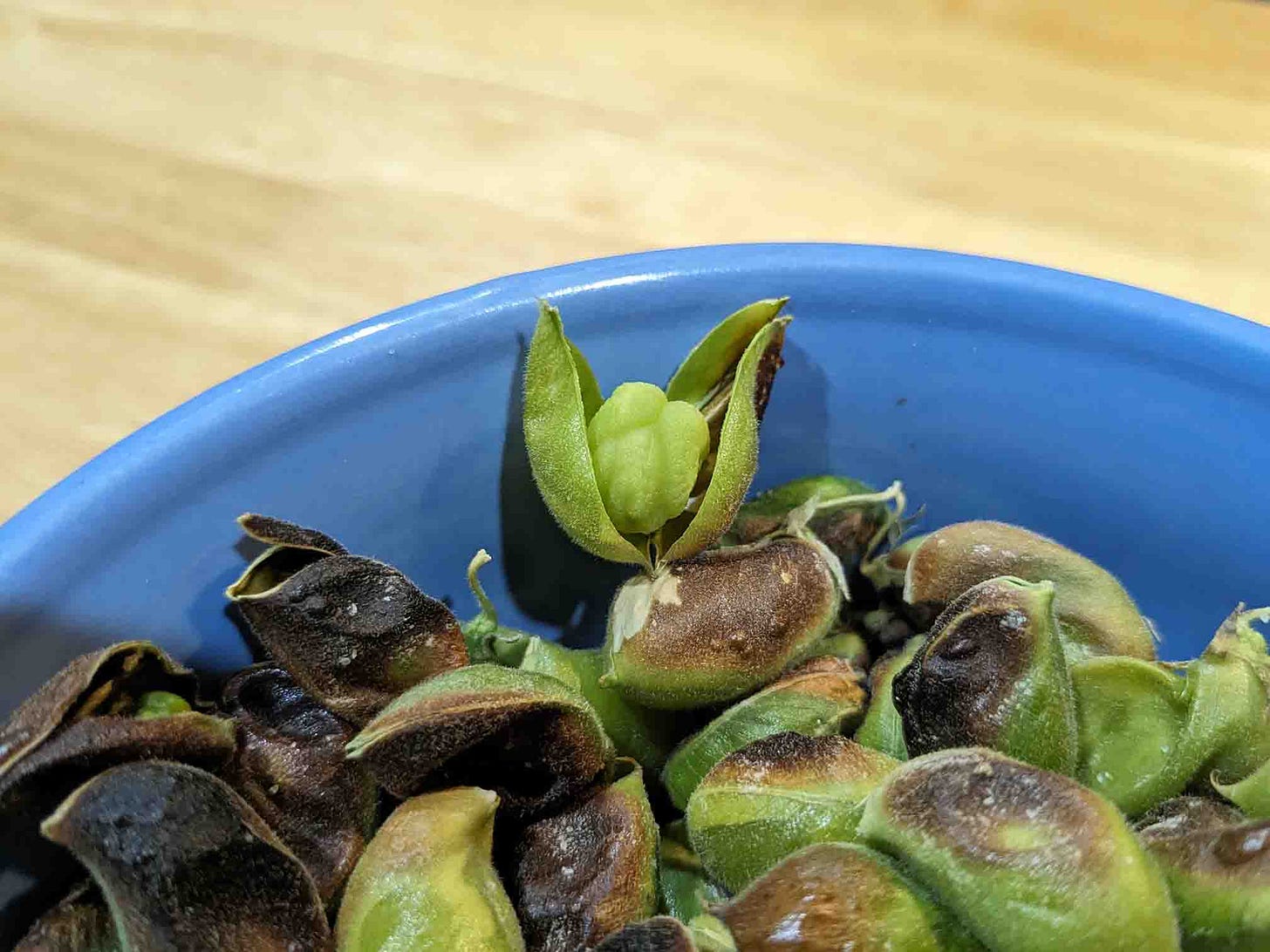

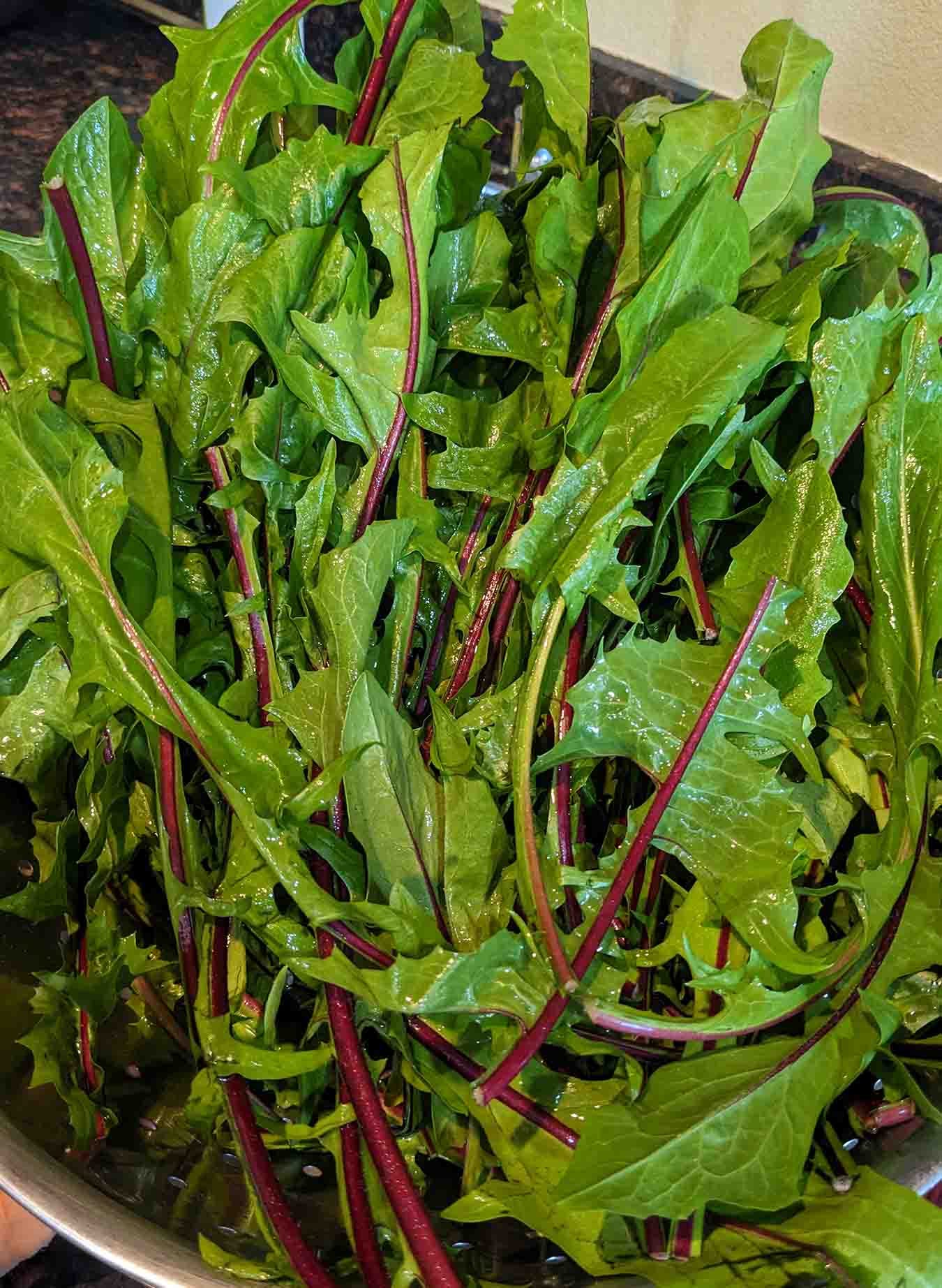
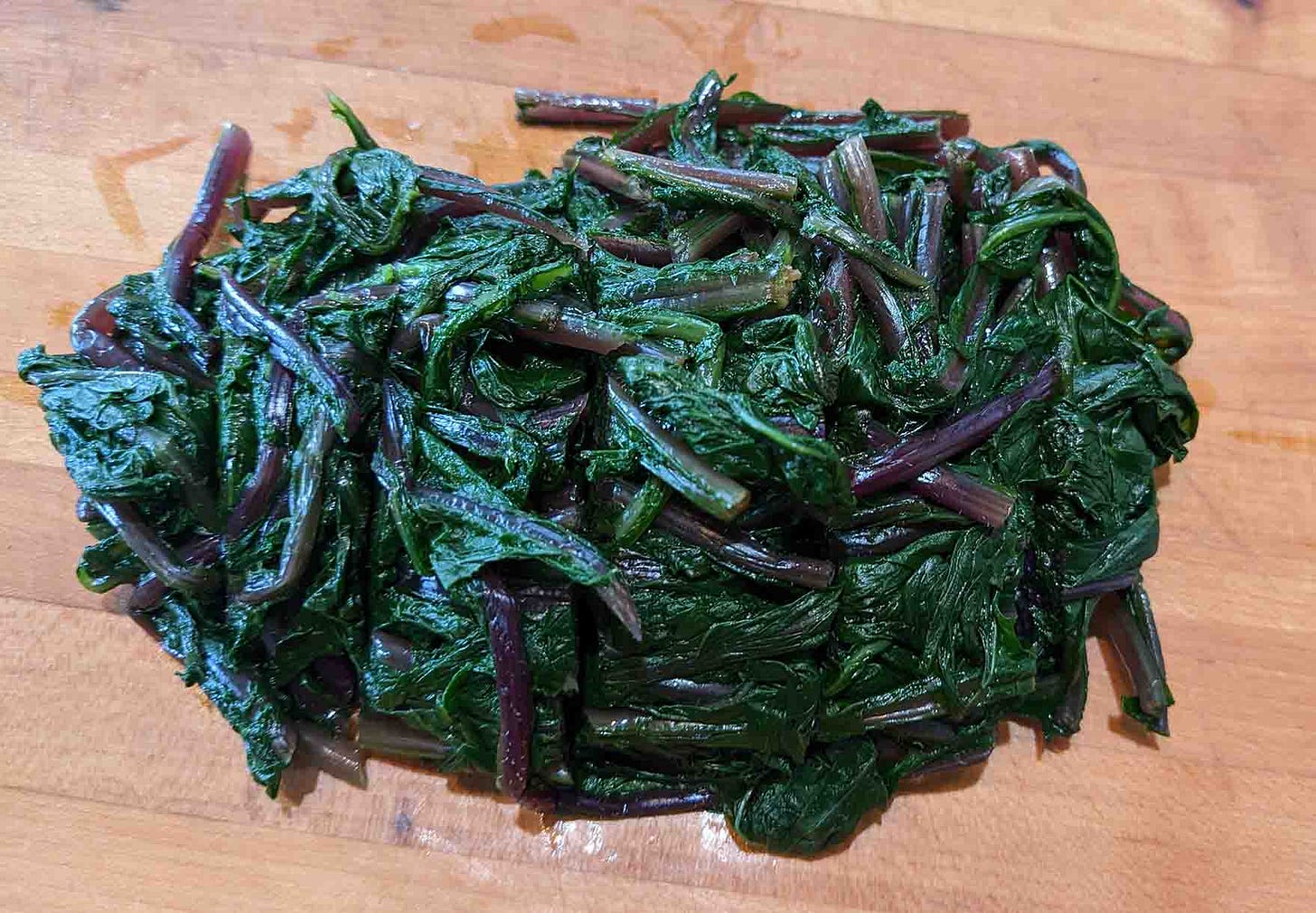
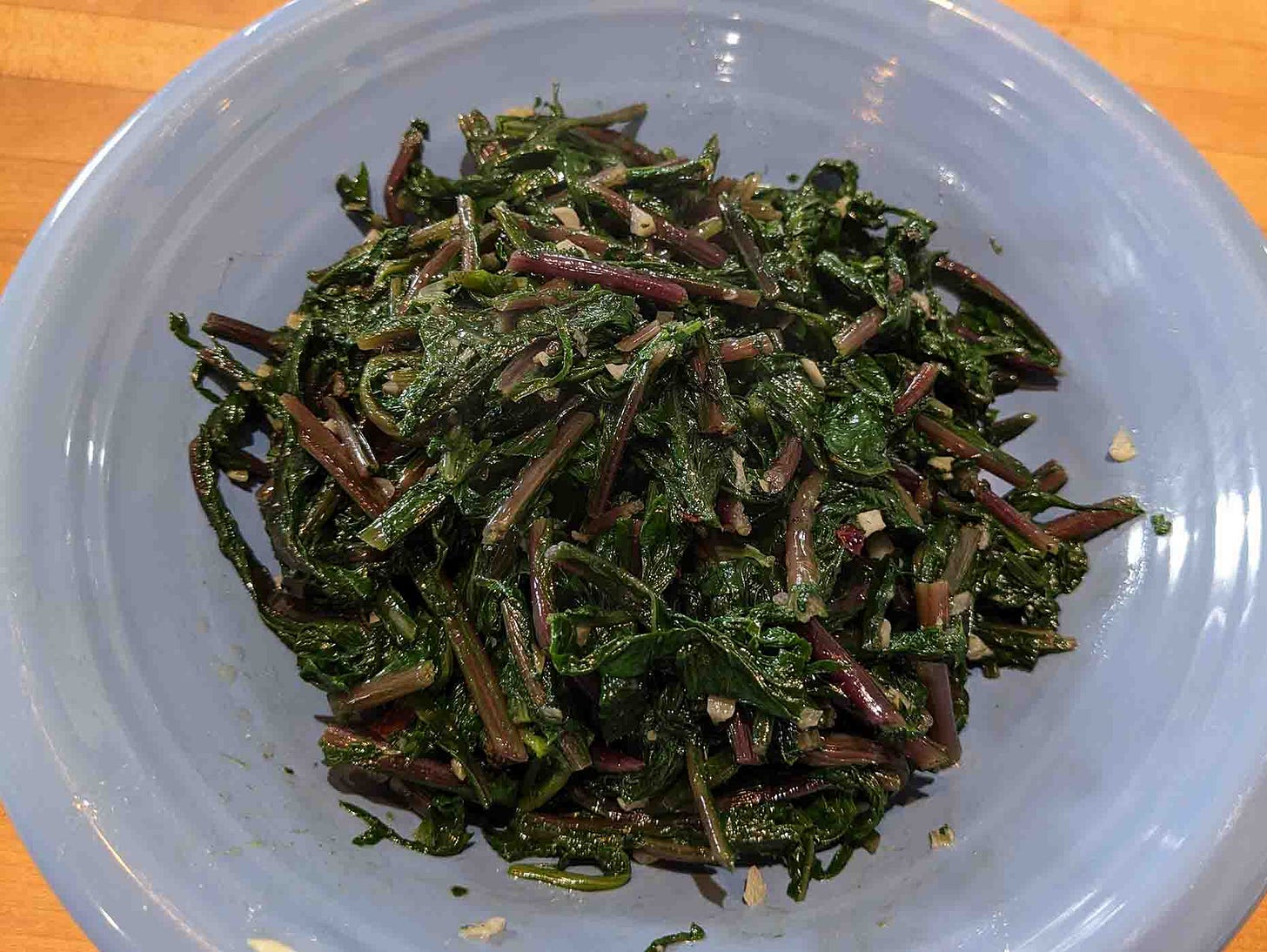
Loved this—when we were at the Holy Land last (February) we did the same thing exactly. Also saw the green chickpeas, but ultimately didn’t buy any. Maybe next time we’ll give it a shot. I always love picking up unfamiliar things there.